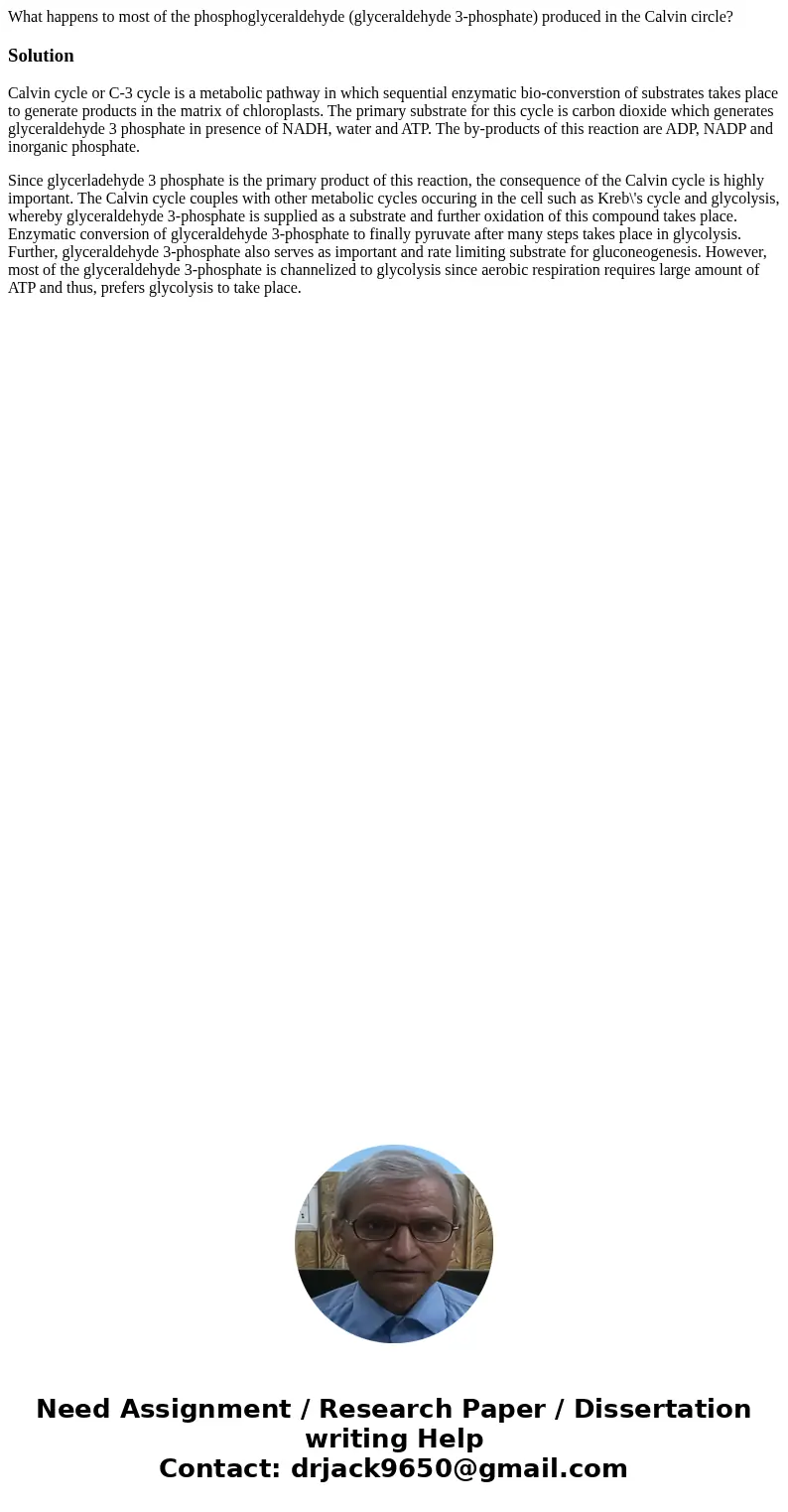What happens to most of the phosphoglyceraldehyde glyceralde
What happens to most of the phosphoglyceraldehyde (glyceraldehyde 3-phosphate) produced in the Calvin circle?
Solution
Calvin cycle or C-3 cycle is a metabolic pathway in which sequential enzymatic bio-converstion of substrates takes place to generate products in the matrix of chloroplasts. The primary substrate for this cycle is carbon dioxide which generates glyceraldehyde 3 phosphate in presence of NADH, water and ATP. The by-products of this reaction are ADP, NADP and inorganic phosphate.
Since glycerladehyde 3 phosphate is the primary product of this reaction, the consequence of the Calvin cycle is highly important. The Calvin cycle couples with other metabolic cycles occuring in the cell such as Kreb\'s cycle and glycolysis, whereby glyceraldehyde 3-phosphate is supplied as a substrate and further oxidation of this compound takes place. Enzymatic conversion of glyceraldehyde 3-phosphate to finally pyruvate after many steps takes place in glycolysis. Further, glyceraldehyde 3-phosphate also serves as important and rate limiting substrate for gluconeogenesis. However, most of the glyceraldehyde 3-phosphate is channelized to glycolysis since aerobic respiration requires large amount of ATP and thus, prefers glycolysis to take place.

 Homework Sourse
Homework Sourse